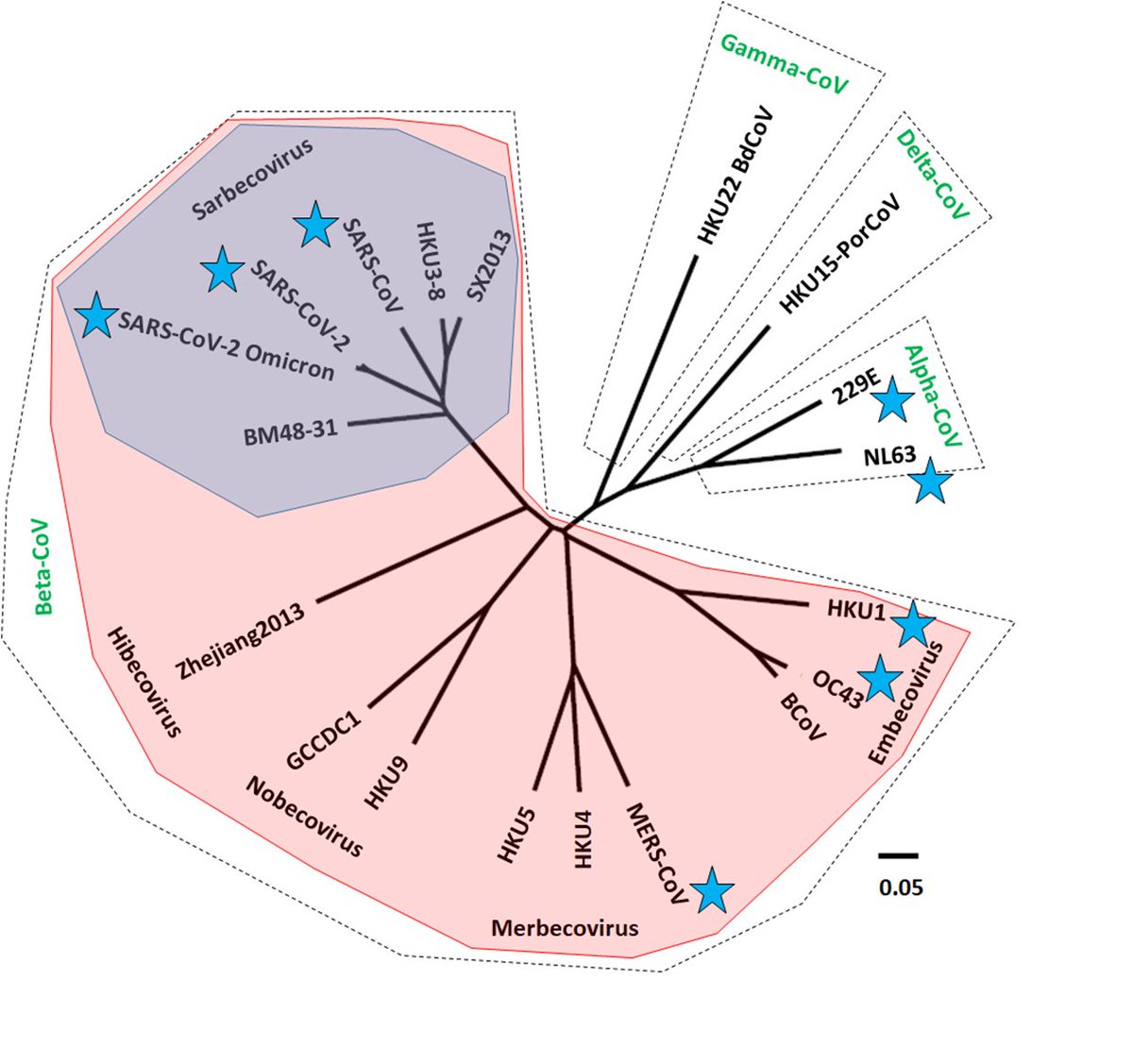1) We now often hear about & #39;universal coronavirus vaccines& #39; in the media. I think development of a universal coronavirus vaccine is an important goal that may be achievable in the long run if sufficient funding is available. But I think we should not make any false promises.....
2) ....about short term successes and the media should really make sure to use correct nomenclature. I& #39;ll try to explain what I mean with this with the below figure. Its a rough phylogenetic tree based on the spike protein sequences of different coronaviruses. There are four....
3)...types. Alphacoronaviruses, betacoronaviruses, gammacoronaviruses and deltacoronaviruses. Gamma and deltacoronaviruses usually do not cause issues in humans but infect many animals (and could maybe cause issues in humans in the future).
4) Alphacoronaviruses include 229E and NL63, which are human common cold coronaviruses (all viruses known to cause disease in humans in the phylogenetic tree are marked with blue stars). Betacoronaviruses also include human common cold coronaviruses, namely OC43 and HKU1.
5) Betacoronaviruses also include the bad guys. In the subgenus merbecovirus we have MERS CoV, or Middle Eastern Respiratory Syndrome Coronavirus. This virus has a high case fatality rate and is transmitted from camels to humans. It usually doesn& #39;t transmit...
6)...well among humans, but has been causing a large scale outbreak in South Korea in 2015. The South Koreans contained it well - but this could have gone wrong if it had occurred in places less skilled at containing outbreaks ( https://en.wikipedia.org/wiki/2015_Middle_East_respiratory_syndrome_outbreak_in_South_Korea).">https://en.wikipedia.org/wiki/2015...
7) Another subgenus is formed by the sarbecoviruses. This includes SARS CoV from 2003, which in my opinion almost caused a pandemic ( https://en.wikipedia.org/wiki/2002%E2%80%932004_SARS_outbreak).">https://en.wikipedia.org/wiki/2002... It also includes SARS-CoV-2. Now, I added the original SARS-CoV-2 as well as the Omicron variant in the tree.
8) See how close they are? This is the current problem we need to solve. Now, there are vaccine candidates that induce cross-reactive antibodies against SARS-CoV-2 and SARS-CoV, and that is great. You find this antibodies sometimes also in SARS-CoV-2 vaccinated individuals.
9) But there is a high diversity of sarbecoviruses. Some use ACE2 as receptor like SARS-CoV-2 and SARS-CoV. Some don& #39;t (a great review here: https://academic.oup.com/ve/article/7/1/veab007/6129116).">https://academic.oup.com/ve/articl... And that makes vaccine development tough.
10) I think a variant-proof SARS-CoV-2 vaccine can be developed relatively quickly (a few years). A pan-sarbecovirus vaccine is a much tougher target but may be feasible. A pan-betacoronavirus vaccine is, I think, possible but developing one would take a very long time.
11) Maybe we will at some point even arrive at a pan-coronavirus vaccine. This would likely be multivalent and it would take a very long development time. For many of these, the licensure pathway is not clear at all, making this more complicated. Either way, I think we need....
12)...to be careful with definitions and language to make sure we do not promise things that cannot be realized quickly or not at all.

 Read on Twitter
Read on Twitter










